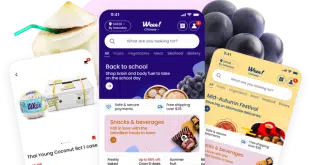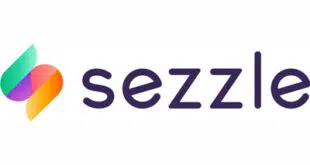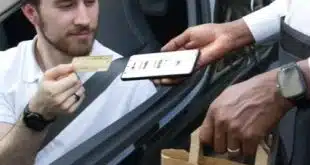Consumers using the Phillips 66, Conoco, or 76-branded smart-phone apps soon will be able to pay for fuel using their checking accounts thanks to an integration with Buy It Mobility Networks, a New York City-based payment and customer relationship management platform.
Announced Tuesday, the service will be available soon, says Adam Frisch, Buy It Mobility’s chief executive. Consumers will be able to pay for fuel by selecting the automated clearing house payment option in the apps. BIM worked with P97 Networks Inc., a Houston-based company that provides payments services to Phillips 66 for its mobile apps. This is BIM’s first public announcement about its service with a brand, though Frisch expects others to follow.

ACH transactions generally are less expensive for merchants than credit card payments. Frisch says its costs are from 50% to 90% less than other transaction type fees. BIM also guarantees approved transactions.
While the merchant benefits from lower costs, consumers, too, will get some reward. Though Phillips 66 has yet to disclose these rewards, other ACH-based fuel payments services have provided discounted price per gallon or bonus loyalty points.
The white-labeled BIM service features a speedy enrollment process. Frisch says it takes approximately 40 seconds to sign up, and BIM covers approximately 95% of U.S. checking accounts.
To enroll, a consumer types in an email address and selects a four-digit PIN. Then, she scans the barcode on her driver’s license. If there is no barcode, she snaps a photo of the license. She next enters the user name and password for her online banking. The information is submitted to BIM for verification, Frisch says.
On the back end of the enrollment process, the consumer’s data is vetted to verify the individual’s identity, payment credentials, and device information, Frisch says. The dilemma for merchants is that they have to contend with mobile fraud. They could either make the enrollment process easy and deal with fraud after the fact, Frisch says, or make the process more stringent, but risk alienating consumers. BIM’s platform strikes a balance, he says. “We’re not naïve enough to say we’ll eliminate fraud, but it will be small,” Frisch says.
BIM, which played a role in CurrentC, the now-defunct mobile wallet from the Merchant Customer Exchange LLC retailer consortium, is targeting other everyday-spend types of merchants, such as pharmacies and quick-serve restaurants, Frisch says. Typically, 60% to 70% of purchases are made with cash or debit cards in these categories, he says.
Besides lowering merchants’ transaction costs, BIM can provide them with a platform to market their business, Frisch says. While a fuel retailer may tout discounted gasoline prices using BIM’s ACH-payment option, a pharmacy may focus on convenience. For example, Frisch says, a consumer filling a prescription for an ill child may get a guaranteed time to pick up the medicine when using the payment option.
“How merchants choose to present their brands and their buying experiences to customers is completely up to them,” Frisch says.
In related news, NCR Corp. announced its NCR Mobile Payments service Wednesday. The service is built using P97’s PetroZone platform, the same technology used by Phillips 66.





